QPen Class Reference |
| QPen () | |
| QPen ( Qt::PenStyle style ) | |
| QPen ( const QColor & color ) | |
| QPen ( const QBrush & brush, qreal width, Qt::PenStyle style = Qt::SolidLine, Qt::PenCapStyle cap = Qt::SquareCap, Qt::PenJoinStyle join = Qt::BevelJoin ) | |
| QPen ( const QPen & pen ) | |
| ~QPen () | |
| QBrush | brush () const |
| Qt::PenCapStyle | capStyle () const |
| QColor | color () const |
| qreal | dashOffset () const |
| QVector<qreal> | dashPattern () const |
| bool | isCosmetic () const |
| bool | isSolid () const |
| Qt::PenJoinStyle | joinStyle () const |
| qreal | miterLimit () const |
| void | setBrush ( const QBrush & brush ) |
| void | setCapStyle ( Qt::PenCapStyle style ) |
| void | setColor ( const QColor & color ) |
| void | setCosmetic ( bool cosmetic ) |
| void | setDashOffset ( qreal offset ) |
| void | setDashPattern ( const QVector<qreal> & pattern ) |
| void | setJoinStyle ( Qt::PenJoinStyle style ) |
| void | setMiterLimit ( qreal limit ) |
| void | setStyle ( Qt::PenStyle style ) |
| void | setWidth ( int width ) |
| void | setWidthF ( qreal width ) |
| Qt::PenStyle | style () const |
| int | width () const |
| qreal | widthF () const |
| operator QVariant () const | |
| bool | operator!= ( const QPen & pen ) const |
| QPen & | operator= ( const QPen & pen ) |
| bool | operator== ( const QPen & pen ) const |
Related Non-Members
| QDataStream & | operator<< ( QDataStream & stream, const QPen & pen ) |
| QDataStream & | operator>> ( QDataStream & stream, QPen & pen ) |
Detailed Description
The QPen class defines how a QPainter should draw lines and outlines of shapes.
A pen has a style(), width(), brush(), capStyle() and joinStyle().
The pen style defines the line type. The brush is used to fill strokes generated with the pen. Use the QBrush class to specify fill styles. The cap style determines the line end caps that can be drawn using QPainter, while the join style describes how joins between two lines are drawn. The pen width can be specified in both integer (width()) and floating point (widthF()) precision. A line width of zero indicates a cosmetic pen. This means that the pen width is always drawn one pixel wide, independent of the transformation set on the painter.
The various settings can easily be modified using the corresponding setStyle(), setWidth(), setBrush(), setCapStyle() and setJoinStyle() functions (note that the painter's pen must be reset when altering the pen's properties).
For example:
QPainter painter(this); QPen pen(Qt::green, 3, Qt::DashDotLine, Qt::RoundCap, Qt::RoundJoin); painter.setPen(pen);
which is equivalent to
QPainter painter(this); QPen pen(); // creates a default pen pen.setStyle(Qt::DashDotLine); pen.setWidth(3); pen.setBrush(Qt::green); pen.setCapStyle(Qt::RoundCap); pen.setJoinStyle(Qt::RoundJoin); painter.setPen(pen);
The default pen is a solid black brush with 0 width, square cap style (Qt::SquareCap), and bevel join style (Qt::BevelJoin).
In addition QPen provides the color() and setColor() convenience functions to extract and set the color of the pen's brush, respectively. Pens may also be compared and streamed.
For more information about painting in general, see The Paint System documentation.
Pen Style
Qt provides several built-in styles represented by the Qt::PenStyle enum:
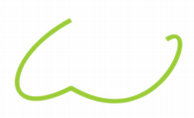 | 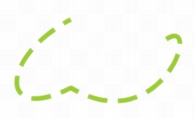 |  |
| Qt::SolidLine | Qt::DashLine | Qt::DotLine |
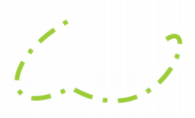 | 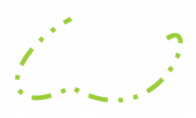 | 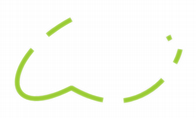 |
| Qt::DashDotLine | Qt::DashDotDotLine | Qt::CustomDashLine |
Simply use the setStyle() function to convert the pen style to either of the built-in styles, except the Qt::CustomDashLine style which we will come back to shortly. Setting the style to Qt::NoPen tells the painter to not draw lines or outlines. The default pen style is Qt::SolidLine.
Since Qt 4.1 it is also possible to specify a custom dash pattern using the setDashPattern() function which implicitly converts the style of the pen to Qt::CustomDashLine. The pattern argument, a QVector, must be specified as an even number of qreal entries where the entries 1, 3, 5... are the dashes and 2, 4, 6... are the spaces. For example, the custom pattern shown above is created using the following code:
QPen pen;
QVector<qreal> dashes;
qreal space = 4;
dashes << 1 << space << 3 << space << 9 << space
<< 27 << space << 9 << space;
pen.setDashPattern(dashes);
Note that the dash pattern is specified in units of the pens width, e.g. a dash of length 5 in width 10 is 50 pixels long.
The currently set dash pattern can be retrieved using the dashPattern() function. Use the isSolid() function to determine whether the pen has a solid fill, or not.
Cap Style
The cap style defines how the end points of lines are drawn using QPainter. The cap style only apply to wide lines, i.e. when the width is 1 or greater. The Qt::PenCapStyle enum provides the following styles:
 |  | 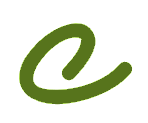 |
| Qt::SquareCap | Qt::FlatCap | Qt::RoundCap |
The Qt::SquareCap style is a square line end that covers the end point and extends beyond it by half the line width. The Qt::FlatCap style is a square line end that does not cover the end point of the line. And the Qt::RoundCap style is a rounded line end covering the end point.
The default is Qt::SquareCap.
Whether or not end points are drawn when the pen width is 0 or 1 depends on the cap style. Using Qt::SquareCap or Qt::RoundCap they are drawn, using Qt::FlatCap they are not drawn.
Join Style
The join style defines how joins between two connected lines can be drawn using QPainter. The join style only apply to wide lines, i.e. when the width is 1 or greater. The Qt::PenJoinStyle enum provides the following styles:
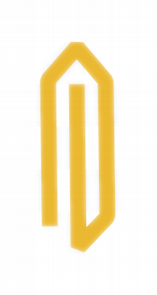 | 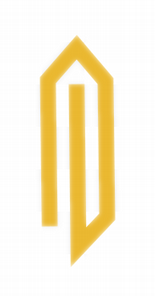 | 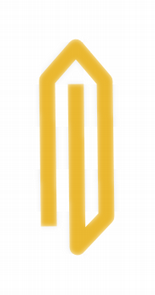 |
| Qt::BevelJoin | Qt::MiterJoin | Qt::RoundJoin |
The Qt::BevelJoin style fills the triangular notch between the two lines. The Qt::MiterJoin style extends the lines to meet at an angle. And the Qt::RoundJoin style fills a circular arc between the two lines.
The default is Qt::BevelJoin.
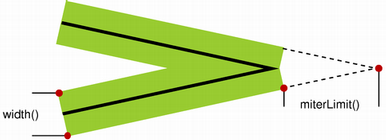
When the Qt::MiterJoin style is applied, it is possible to use the setMiterLimit() function to specify how far the miter join can extend from the join point. The miterLimit() is used to reduce artifacts between line joins where the lines are close to parallel.
The miterLimit() must be specified in units of the pens width, e.g. a miter limit of 5 in width 10 is 50 pixels long. The default miter limit is 2, i.e. twice the pen width in pixels.
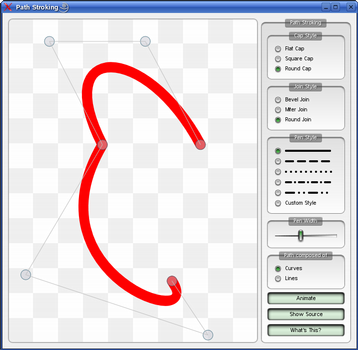 | The Path Stroking Demo The Path Stroking demo shows Qt's built-in dash patterns and shows how custom patterns can be used to extend the range of available patterns. |
See also QPainter, QBrush, Path Stroking Demo, and Scribble Example.
Member Function Documentation
QPen::QPen ()
Constructs a default black solid line pen with 0 width.
QPen::QPen ( Qt::PenStyle style )
Constructs a black pen with 0 width and the given style.
See also setStyle().
QPen::QPen ( const QColor & color )
Constructs a solid line pen with 0 width and the given color.
See also setBrush() and setColor().
QPen::QPen ( const QBrush & brush, qreal width, Qt::PenStyle style = Qt::SolidLine, Qt::PenCapStyle cap = Qt::SquareCap, Qt::PenJoinStyle join = Qt::BevelJoin )
Constructs a pen with the specified brush, width, pen style, cap style and join style.
See also setBrush(), setWidth(), setStyle(), setCapStyle(), and setJoinStyle().
QPen::QPen ( const QPen & pen )
Constructs a pen that is a copy of the given pen.
QPen::~QPen ()
Destroys the pen.
QBrush QPen::brush () const
Returns the brush used to fill strokes generated with this pen.
See also setBrush().
Qt::PenCapStyle QPen::capStyle () const
Returns the pen's cap style.
See also setCapStyle() and Cap Style.
QColor QPen::color () const
Returns the color of this pen's brush.
See also brush() and setColor().
qreal QPen::dashOffset () const
Returns the dash offset for the pen.
See also setDashOffset().
QVector<qreal> QPen::dashPattern () const
Returns the dash pattern of this pen.
See also setDashPattern(), style(), and isSolid().
bool QPen::isCosmetic () const
Returns true if the pen is cosmetic; otherwise returns false.
Cosmetic pens are used to draw strokes that have a constant width regardless of any transformations applied to the QPainter they are used with. Drawing a shape with a cosmetic pen ensures that its outline will have the same thickness at different scale factors.
A zero width pen is cosmetic by default; pens with a non-zero width are non-cosmetic.
See also setCosmetic() and widthF().
bool QPen::isSolid () const
Returns true if the pen has a solid fill, otherwise false.
See also style() and dashPattern().
Qt::PenJoinStyle QPen::joinStyle () const
Returns the pen's join style.
See also setJoinStyle() and Join Style.
qreal QPen::miterLimit () const
Returns the miter limit of the pen. The miter limit is only relevant when the join style is set to Qt::MiterJoin.
See also setMiterLimit() and Join Style.
void QPen::setBrush ( const QBrush & brush )
Sets the brush used to fill strokes generated with this pen to the given brush.
See also brush() and setColor().
void QPen::setCapStyle ( Qt::PenCapStyle style )
Sets the pen's cap style to the given style. The default value is Qt::SquareCap.
See also capStyle() and Cap Style.
void QPen::setColor ( const QColor & color )
Sets the color of this pen's brush to the given color.
See also setBrush() and color().
void QPen::setCosmetic ( bool cosmetic )
Sets this pen to cosmetic or non-cosmetic, depending on the value of cosmetic.
See also isCosmetic().
void QPen::setDashOffset ( qreal offset )
Sets the dash offset (the starting point on the dash pattern) for this pen to the offset specified. The offset is measured in terms of the units used to specify the dash pattern.
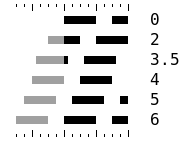 | For example, a pattern where each stroke is four units long, followed by a gap of two units, will begin with the stroke when drawn as a line. However, if the dash offset is set to 4.0, any line drawn will begin with the gap. Values of the offset up to 4.0 will cause part of the stroke to be drawn first, and values of the offset between 4.0 and 6.0 will cause the line to begin with part of the gap. |
Note: This implicitly converts the style of the pen to Qt::CustomDashLine.
See also dashOffset().
void QPen::setDashPattern ( const QVector<qreal> & pattern )
Sets the dash pattern for this pen to the given pattern. This implicitly converts the style of the pen to Qt::CustomDashLine.
The pattern must be specified as an even number of positive entries where the entries 1, 3, 5... are the dashes and 2, 4, 6... are the spaces. For example:
 | QPen pen;
QVector<qreal> dashes;
qreal space = 4;
dashes << 1 << space << 3 << space << 9 << space
<< 27 << space << 9 << space;
pen.setDashPattern(dashes);
|
The dash pattern is specified in units of the pens width; e.g. a dash of length 5 in width 10 is 50 pixels long. Note that a pen with zero width is equivalent to a cosmetic pen with a width of 1 pixel.
Each dash is also subject to cap styles so a dash of 1 with square cap set will extend 0.5 pixels out in each direction resulting in a total width of 2.
Note that the default cap style is Qt::SquareCap, meaning that a square line end covers the end point and extends beyond it by half the line width.
See also setStyle(), dashPattern(), setCapStyle(), and setCosmetic().
void QPen::setJoinStyle ( Qt::PenJoinStyle style )
Sets the pen's join style to the given style. The default value is Qt::BevelJoin.
See also joinStyle() and Join Style.
void QPen::setMiterLimit ( qreal limit )
Sets the miter limit of this pen to the given limit.

The miter limit describes how far a miter join can extend from the join point. This is used to reduce artifacts between line joins where the lines are close to parallel.
This value does only have effect when the pen style is set to Qt::MiterJoin. The value is specified in units of the pen's width, e.g. a miter limit of 5 in width 10 is 50 pixels long. The default miter limit is 2, i.e. twice the pen width in pixels.
See also miterLimit(), setJoinStyle(), and Join Style.
void QPen::setStyle ( Qt::PenStyle style )
Sets the pen style to the given style.
See the Qt::PenStyle documentation for a list of the available styles. Since Qt 4.1 it is also possible to specify a custom dash pattern using the setDashPattern() function which implicitly converts the style of the pen to Qt::CustomDashLine.
Note: This function resets the dash offset to zero.
See also style() and Pen Style.
void QPen::setWidth ( int width )
Sets the pen width to the given width in pixels with integer precision.
A line width of zero indicates a cosmetic pen. This means that the pen width is always drawn one pixel wide, independent of the transformation set on the painter.
Setting a pen width with a negative value is not supported.
See also setWidthF() and width().
void QPen::setWidthF ( qreal width )
Sets the pen width to the given width in pixels with floating point precision.
A line width of zero indicates a cosmetic pen. This means that the pen width is always drawn one pixel wide, independent of the transformation on the painter.
Setting a pen width with a negative value is not supported.
See also setWidth() and widthF().
Qt::PenStyle QPen::style () const
Returns the pen style.
See also setStyle() and Pen Style.
int QPen::width () const
Returns the pen width with integer precision.
See also setWidth() and widthF().
qreal QPen::widthF () const
Returns the pen width with floating point precision.
See also setWidthF() and width().
QPen::operator QVariant () const
Returns the pen as a QVariant.
Returns true if the pen is different from the given pen; otherwise false. Two pens are different if they have different styles, widths or colors.
See also operator==().
Assigns the given pen to this pen and returns a reference to this pen.
bool QPen::operator== ( const QPen & pen ) const
Returns true if the pen is equal to the given pen; otherwise false. Two pens are equal if they have equal styles, widths and colors.
See also operator!=().
Related Non-Members
QDataStream & operator<< ( QDataStream & stream, const QPen & pen )
Writes the given pen to the given stream and returns a reference to the stream.
See also Format of the QDataStream Operators.
QDataStream & operator>> ( QDataStream & stream, QPen & pen )
Reads a pen from the given stream into the given pen and returns a reference to the stream.
See also Format of the QDataStream Operators.
Best Of
Actualités les plus lues
- «Le projet de loi des droits du développeur» : quelles conditions doivent remplir les entreprises pour que le développeur puisse réussir ? 92
- Thread travailleur avec Qt en utilisant les signaux et les slots, un article de Christophe Dumez traduit par Thibaut Cuvelier 1
- « Quelque chose ne va vraiment pas avec les développeurs "modernes" », un développeur à "l'ancienne" critique la multiplication des bibliothèques 103
- Pourquoi les programmeurs sont-ils moins payés que les gestionnaires de programmes ? Manquent-ils de pouvoir de négociation ? 56
- «Le projet de loi des droits du développeur» : quelles conditions doivent remplir les entreprises pour que le développeur puisse réussir ? 90
- Les développeurs détestent-ils les antivirus ? Un programmeur manifeste sa haine envers ces solutions de sécurité 31
- Qt Commercial : Digia organise un webinar gratuit le 27 mars sur la conception d'interfaces utilisateur et d'applications avec le framework 0
- Quelles nouveautés de C++11 Visual C++ doit-il rapidement intégrer ? Donnez-nous votre avis 10
- 2017 : un quinquennat pour une nouvelle version du C++ ? Possible, selon Herb Sutter 11

- Linus Torvalds : le "C++ est un langage horrible", en justifiant le choix du C pour le système de gestion de version Git 100
- Comment prendre en compte l'utilisateur dans vos applications ? Pour un développeur, « 90 % des utilisateurs sont des idiots » 231
- Quel est LE livre que tout développeur doit lire absolument ? Celui qui vous a le plus marqué et inspiré 96
- Apple cède et s'engage à payer des droits à Nokia, le conflit des brevets entre les deux firmes s'achève 158
- Nokia porte à nouveau plainte contre Apple pour violation de sept nouveaux brevets 158
- « Quelque chose ne va vraiment pas avec les développeurs "modernes" », un développeur à "l'ancienne" critique la multiplication des bibliothèques 103
- Quel est le code dont vous êtes le plus fier ? Pourquoi l'avez-vous écrit ? Et pourquoi vous a-t-il donné autant de satisfaction ? 83

Le Qt Developer Network au hasard

Comment fermer une application
Communauté
Ressources
- 91 cours et tutoriels Qt
- F.A.Q. Qt : 200 questions et réponses
- 51 Qt Quarterly, 35 Qt Labs et 22 Qt DevNet en français
- 43 outils Qt
- 99 sources Qt et 26 binaires Qt
- 6 livres Qt et 9 critiques
- La documentation de Qt 4.7 en français : 157 classes, 70 concepts et 24 modules
- 3 certifications Qt
Liens utiles
Contact
- Vous souhaitez rejoindre la rédaction ou proposer un tutoriel, une traduction, une question... ? Postez dans le forum Contribuez ou contactez-nous par MP ou par email (voir en bas de page).
Qt dans le magazine
| Cette page est une traduction d'une page de la documentation de Qt, écrite par Nokia Corporation and/or its subsidiary(-ies). Les éventuels problèmes résultant d'une mauvaise traduction ne sont pas imputables à Nokia. | Qt 4.6-snapshot | |
| Copyright © 2012 Developpez LLC. Tous droits réservés Developpez LLC. Aucune reproduction, même partielle, ne peut être faite de ce site et de l'ensemble de son contenu : textes, documents et images sans l'autorisation expresse de Developpez LLC. Sinon, vous encourez selon la loi jusqu'à 3 ans de prison et jusqu'à 300 000 E de dommages et intérêts. Cette page est déposée à la SACD. | ||
| Vous avez déniché une erreur ? Un bug ? Une redirection cassée ? Ou tout autre problème, quel qu'il soit ? Ou bien vous désirez participer à ce projet de traduction ? N'hésitez pas à nous contacter ou par MP ! | ||
Copyright © 2000-2012 - www.developpez.com



















